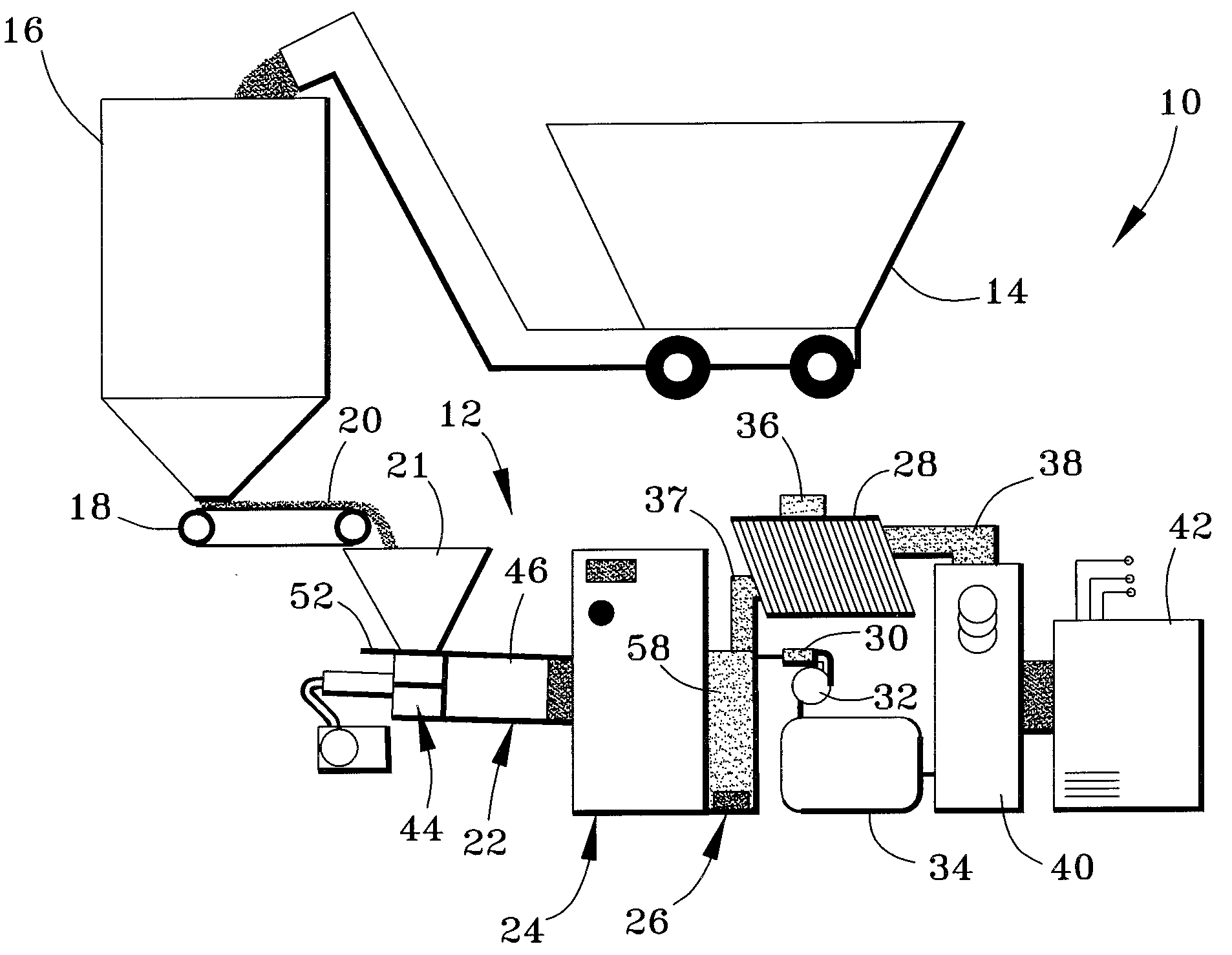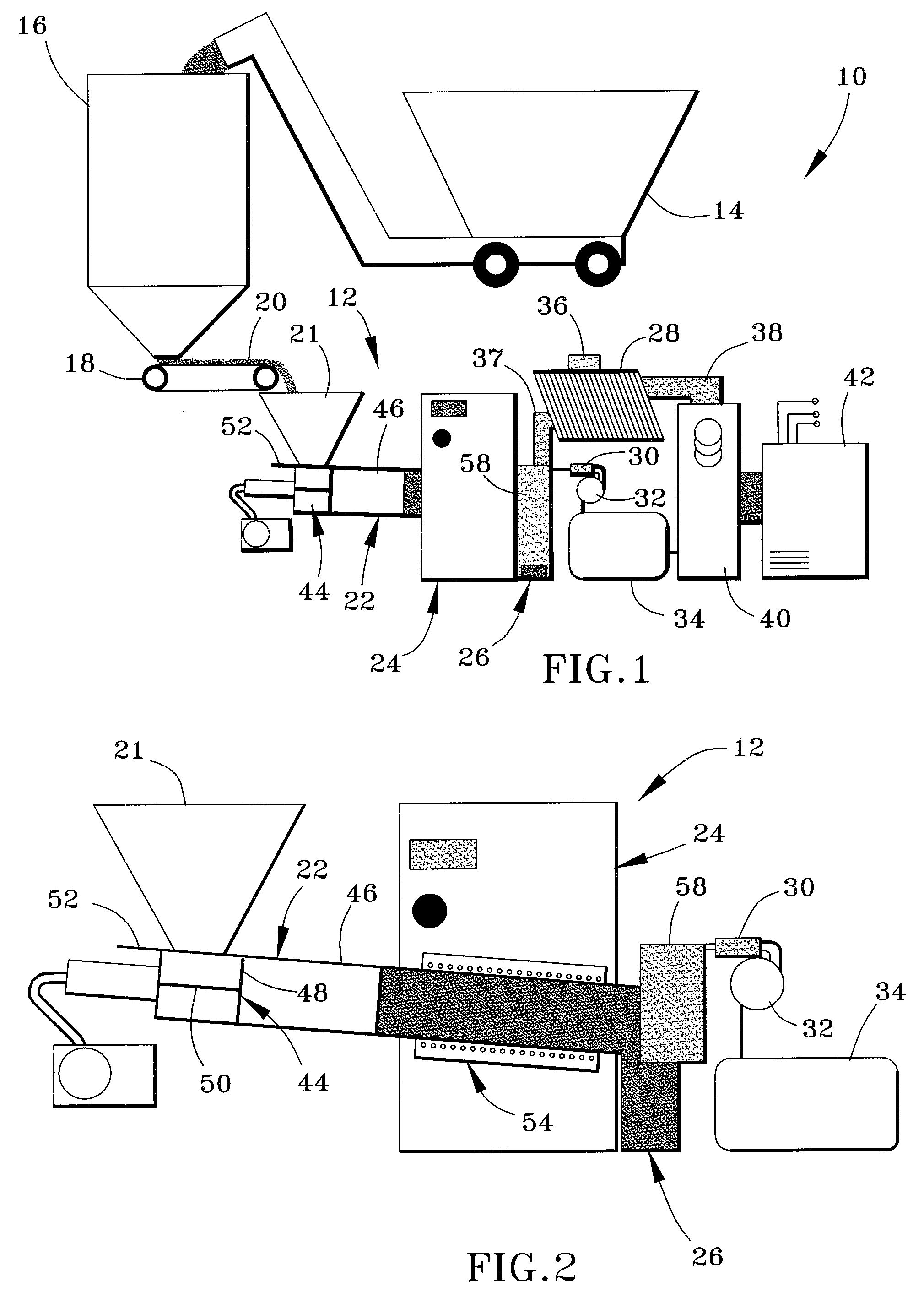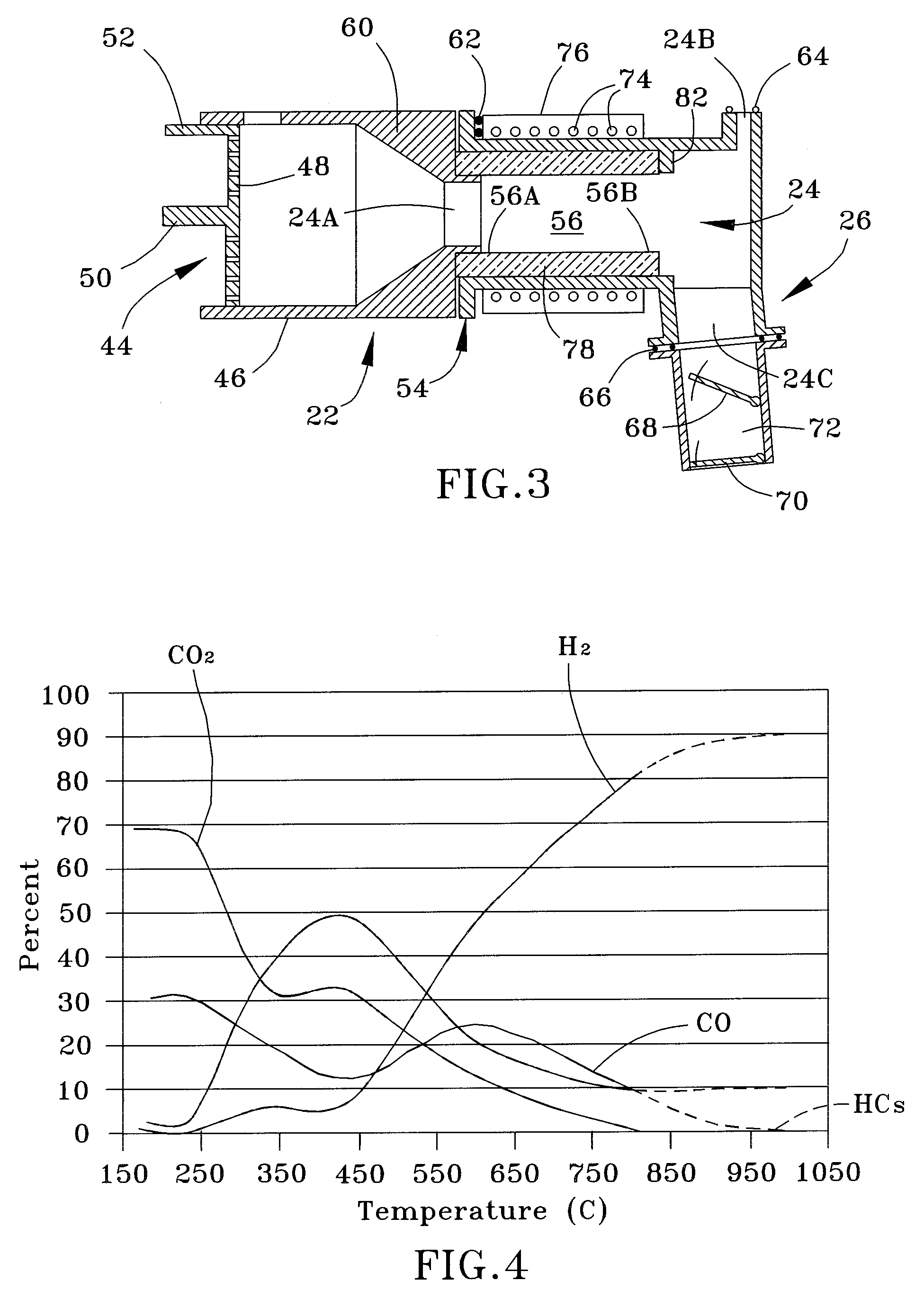Process and system for syngas production from biomass materials
a biomass material and process technology, applied in the field of biomass material process and system, can solve the problems of uneconomical practical use of conventional syngas-generating apparatus and processes, and achieve the effect of promoting the formation of hydrogen and carbon monoxide gases
- Summary
- Abstract
- Description
- Claims
- Application Information
AI Technical Summary
Benefits of technology
Problems solved by technology
Method used
Image
Examples
Embodiment Construction
[0021]FIG. 1 schematically represents an energy generation system 10 for generating syngas from organic materials, with biomass materials being of particular interest to the invention. The system 10 includes a gasification apparatus 12 comprising a biomass compaction unit 22, a reactor unit 24, and an ash removal unit 26 that are preferably configured to process biomass and produce syngas in a quasi-continuous process. The system 10 is further represented as utilizing the syngas to generate heat and electric power.
[0022]Gasification of biomass material delivered by the compaction unit 22 is performed within the reactor unit 24. According to a preferred aspect of the invention, the gasification process within the reactor unit 24 occurs in an atmosphere containing minimal air, and in such an oxygen-starved environment the biomass material is subjected to a temperature that is sufficiently high so that complex organic molecules are broken down (pyrolyzed) instead of combusted. As will ...
PUM
| Property | Measurement | Unit |
|---|---|---|
| temperature | aaaaa | aaaaa |
| volume percent | aaaaa | aaaaa |
| volume percent | aaaaa | aaaaa |
Abstract
Description
Claims
Application Information
 Login to View More
Login to View More - R&D
- Intellectual Property
- Life Sciences
- Materials
- Tech Scout
- Unparalleled Data Quality
- Higher Quality Content
- 60% Fewer Hallucinations
Browse by: Latest US Patents, China's latest patents, Technical Efficacy Thesaurus, Application Domain, Technology Topic, Popular Technical Reports.
© 2025 PatSnap. All rights reserved.Legal|Privacy policy|Modern Slavery Act Transparency Statement|Sitemap|About US| Contact US: help@patsnap.com



